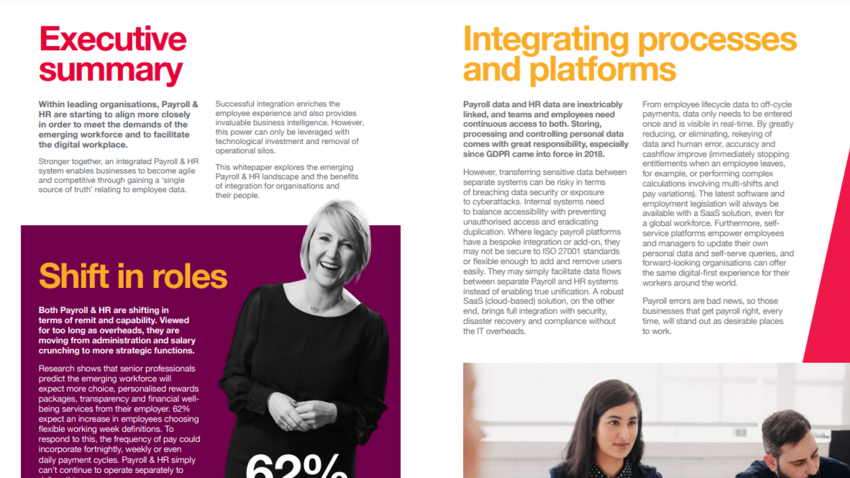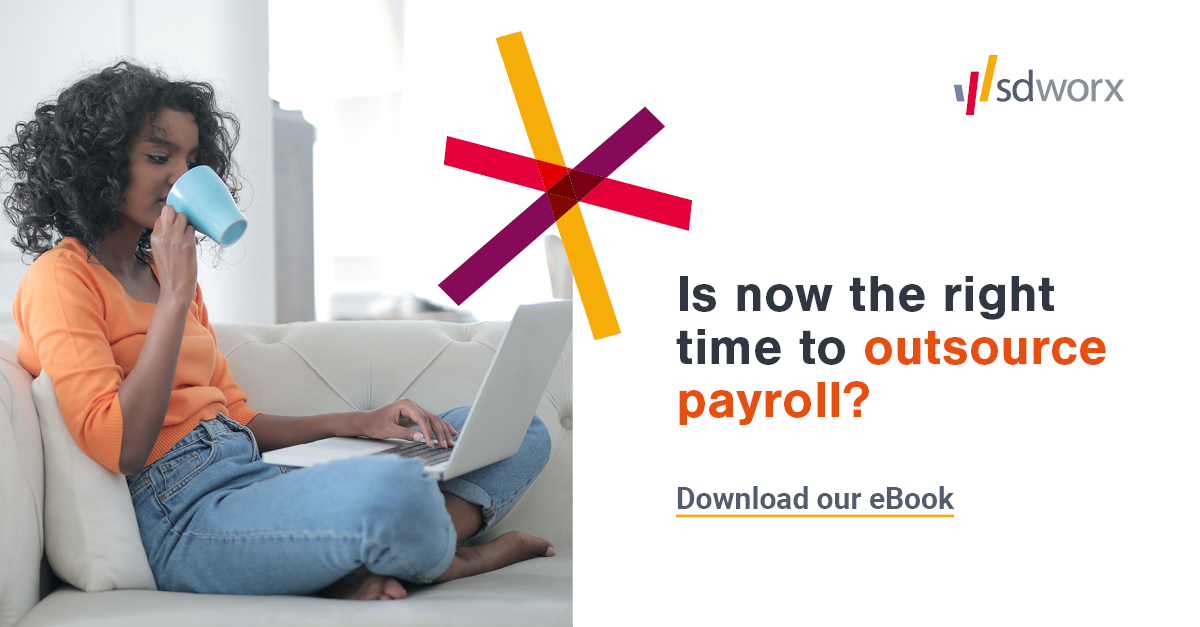
The true cost of not integrating Payroll with your HR systems
The demands placed on the modern HR department continue to grow, in part because of the increased expectations on what can be achieved. This ranges from an ability to improve the employee experience to a capacity to deliver people-focused change on behalf of organisations.
These expectations have created additional layers of complexity, however – and it is now almost impossible to tackle the challenge this presents without a high level of digital sophistication. This is needed to provide easy access to key employee data – which includes crucial payroll information.
Payroll touches on many elements of employment and, as the demands on HR evolve rapidly, this information needs to be available whenever needed. The only way to ensure this is to integrate payroll with HR.
So anyone reviewing the price of payroll and HR integration should also consider the costs when this data is not available in real time. As it will see HR fall short of expectations – and this will prevent it from delivering positive change for employees.
Customer service expectations
Enhanced digital experiences have now become the norm in our everyday consumer lives – and this is putting pressure on employers to keep pace.
Our move towards an ‘everything now’ culture has heightened expectations of what employers can provide. When we request information, we expect instant answers – especially when those questions relate to our personal details or financial prospects.
This is requiring HR to quickly access payroll information. This data touches nearly every aspect of the employee life cycle, from the recruitment and on-boarding phase, through to the rewarding of development and retention of personnel, and, finally, severance at the end.
According to The Future of Work survey, more than three quarters of European companies are either actively seeking ways to improve the employee experience (57%) or have mid or long-term plans (20%) to tackle this issue. If HR really wants to achieve this, it will need to meet its customer service expectations, and this will require integration.
Business demands
Of course, it’s not just employees that have heightened expectations of HR. Senior executives and the HR team itself also wants this information to be automatically available.
If a CHRO needs to calculate the consequence of absences on the business, for example, they need access to both HR and payroll information. When this information isn’t readily available it’s much harder to demonstrate the impact of people-related initiatives. This data provides the insights that empower HR leaders when they are discussing a whole host of issues. Those could relate to absences but could also be about bonuses schemes or an expansion of the workforce.
If HR teams want to dedicate more of their attention to strategic tasks – and push forward initiative like reward and retention schemes, for example – time consuming administrative tasks need to be automated. Without payroll integration, however, the time required for data inputting and resolving queries will continue to be an obstacle to progress.
New ways of working
HR will also struggle to enable new ways of working if it does not have an integrated digital infrastructure that includes payroll.
As working culture has evolved, the big trend to emerge is the movement towards increased workforce fluidity and flexibility. While recent global circumstances have reinforced the need to embrace remote working, there was already a long-term shift towards increased mobility.
To enable more fluid ways of working, organisations are providing employees with a range of digital tools including self-service HR applications – which allow staff to see and update their details automatically on request.
Without payroll integration, however, organisations cannot provide staff with full access to their personal information or offer that enhanced digital experience.
The contingent workforce
Payroll integration is also vital if organisations are going to enable more flexible working. Almost a third (30%) of companies currently employ non-permanent staff and a further 30% say they see this an option for the future.
But any growth in the contingent workforce will create complexity for businesses – this ranges from simply managing time and attendance to ensuring all employees are aligned with the corporate culture and processes.
This is not something that can be managed across multiple spreadsheets. There are just too many moving parts and things change too fast.
If organisations are going to harmonise mobile and contingent workforces, what’s needed is a single source of truth for each employee, and that can only happen if the different systems holding information are connected.
More strategic HR
An ability to enable people-focused change within organisations is also reliant on there being a digitally integrated infrastructure to support the HR function.
There’s no doubt the status of HR within businesses has been elevated in recent years, especially since the global pandemic. Many companies now see HR as key to achieving strategic business goals.
It is difficult to focus on staff welfare, working culture or employee engagement, however, if HR teams are bogged down by manual administration and HR leaders cannot readily access the insights they need.
It’s not easy for the CHRO to talk with conviction about matters of pay, rewards and recruitment, for example, if they cannot easily see payroll information.
The supporting infrastructure
If HR is going to meet increased expectations and become more strategic, it will need more than the best HR system the industry has to offer; it also needs access to the data that matters.
With demands being so complex, it is impossible to manage data through disjointed, disparate and manually processed systems. To ensure everything is working together seamlessly, there needs to be an integrated ecosystem of solutions and services that allow for automation.
This will enable HR to respond faster and access crucial insights in an instant. Without this, HR will struggle to be decisive, react to trends or facilitate change. If organisation don’t integrate their payroll, this will eventually take its toll on the business as whole – and the price of payroll and HR integration will pale into insignificance.
It will, ultimately, damage employee engagement and, as a consequence, the employer brand. It will also prevent HR from pursuing strategic objectives and enabling any change required to improve staff welfare and the employee experience more generally.


